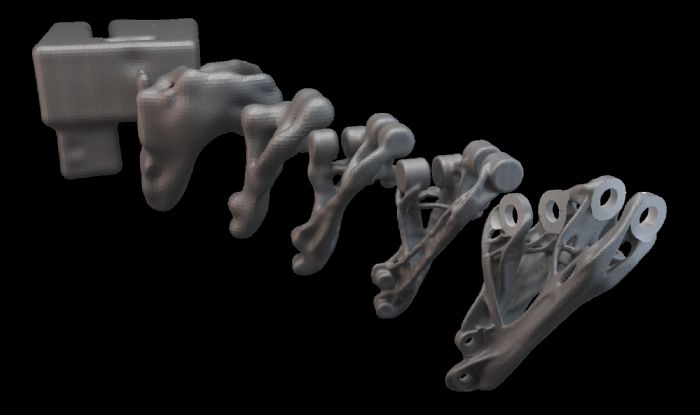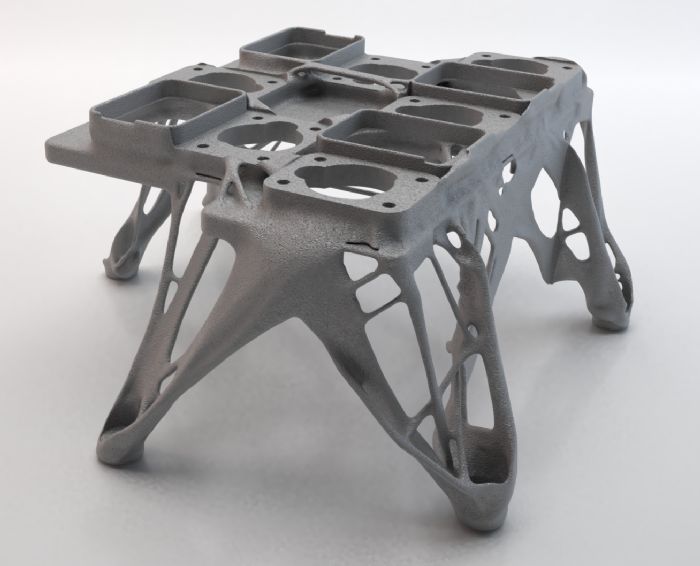In fact, the proliferation of 3D printing during the pandemic led market-research firm SmarTech Analysis to double its initial estimate of the projected value of the AM-software market by 2027. The metal-AM market segment similarly has rosy predictions, with additive consultant AMPower predicting rapidly increasing year-on-year growth of between 20 to 30 percent across suppliers and buyers by 2024.
 Today, of course, supply chains and prepandemic ways of working have begun to reassert themselves, with the traditional workflows likely looking like low-risk options for companies still recovering. To maintain the momentum gathered during the pandemic and help AM progress to widespread industrialization, several crucial process and ecosystem evolutions must be more widely adopted to lower the barriers to AM.
Today, of course, supply chains and prepandemic ways of working have begun to reassert themselves, with the traditional workflows likely looking like low-risk options for companies still recovering. To maintain the momentum gathered during the pandemic and help AM progress to widespread industrialization, several crucial process and ecosystem evolutions must be more widely adopted to lower the barriers to AM.
End-to-End Solutions
End-to-end AM solutions hold the key—just look to the early adopters now making inroads in AM scaling across several sectors and examine how they have transitioned to volume production.
To elaborate, in 2018 General Electric Aviation announced plans to mass-produce fuel-nozzle tips using AM, and to date it has produced more than 30,000 parts. AM allowed it to vastly improve its part-integration process, replacing 30 individual welded pieces, realizing a 25-percent weight reduction and 500-percent increased durability, while improving cost efficiency by 30 percent.
Meanwhile, SMS Group, a group of companies active in plant construction and mechanical engineering for the metals industry, has seen similar success, having developed AM spray heads for closed-die forging that helps reduce cycle times and increase tool service life. The spray heads, 90-percent lighter than previously manufactured heads, provide functional benefits and improve machine efficiency.
The common theme: a focus on value creation, to help transition from 3D printing prototypes to serial production of end-use parts by embracing end-to-end workflows. Functional integration, lightweighting, cost-efficiency and reducing time to market require manufacturers to have a deep understanding of the entire process chain, and how each individual element influences the final part.
A Single Digital Thread of Data
End-to-end essentially means generating, harnessing and tracing a single digital thread of data throughout the entire manufacturing process. Data from shopfloor manufacturing operations, engineering data from the design phase, material properties, and quality data from validation and inspection processes all hold the key to automating serial-production improvements and enabling design advancements.
However, the technical challenge of connecting these silos and applying these data has in the past inhibited manufacturers from introducing more AM into their processes. However, end-to-end solutions do exist, and are poised to help ease 3D printing into more mainstream use.
Hexagon, for example, has partnered with AM-automation-software provider Authentise to offer a fully connected end-to-end solution that applies statistical process control, machine learning and artificial intelligence (AI) to leverage data and their pedigree along the complete workflow. This helps to mitigate waste and quality issues during the design phase, and improve the repeatability of AM processes within a site or between global locations. Such solutions are crucial to expanding the use of AM, as the predominant driver for employing process simulation lies in significantly reducing the number of unsuccessful physical trials and, as a result, developing mature, reliable and repeatable build processes.
Data also can connect the post-processing stage, providing specific information on how to work with a specific part. Ensuring successful builds requires manufacturers, during the design phase, to account for tooling accessibility, toolpath optimization and fixture design. Even vibrations during post-processing of lightweight parts can affect the performance of AM products, and, therefore, must be accounted for.
Virtual AM and Digital Twins
Minor differences between a real AM-build process and a virtual simulation can cause costly issues during production. For example, during powder-fed laser metal-deposition processes, the size and configuration of the laser spot changes if the laser beam is not positioned perpendicular to the surface of the workpiece. And, toolpath programming remains a major challenge for multiaxis AM when defining material-deposition trajectories.
Each step of the workflow presents challenges that alone could become showstoppers, but feeding systematically collected data into a connected workflow—particularly a workflow enhanced with AI—enables creation of a digital twin of the part, with the knowledge gained fed back into the next design. With a digital twin, virtual-manufacturing simulations can be combined with practical knowledge to help identify the optimum AM process for the job at hand, optimize part orientation and improve the build process. What previously may have taken a prohibitive amount of time and money can instead be resolved in a single step.
Such flexibility is key, allowing manufacturers to focus on value creation when scaling. For manufacturers, AM represents a complex and changing market, where open and flexible end-to-end systems enable them to holistically connect the data flow and streamline workflows during all stages of the AM process—before, during and after production to support specific standards or compliance needs.
Therefore, to effectively grow the industry and bring about industrialization, we must nurture a more open and interoperable ecosystem with cloud capabilities. Partners, customers and third parties must be able to connect their data and services to an always-on and available standard set of APIs and protocols—cloud-enabled and allowing for greater data processing and computing through AI.
Workflow Simplification Begets Collaboration
The simplification of workflow and process management across what currently remains a fragmented landscape of separate systems and data sources will allow for more collaboration. This will open AM to smaller companies through consumption-based use of resources and services, as companies no longer would need to invest in an entire closed system for ad-hoc projects. As a result, use of AM would transition beyond large OEMs and move further down the supply chain.
Finally, with open access to quality data and the ability to analyze the data at all steps of production, through a connected workflow and full traceability, a company’s quality department can influence decision making upstream and downstream. That data can help other stakeholders within the manufacturing process ensure that quality runs throughout the product lifecycle, helping to keep us on the path to widespread AM industrialization. 3DMP
See also: Hexagon Manufacturing Intelligence
Technologies:
 Mathieu Perennou
Mathieu Perennou In March 2020, 3YourMind stated that only 1 to 5 percent of parts suit AM, depending on the industry, and that while individual serial applications can make a dent in the bottom line, AM mostly is seen as a complement to traditional production rather than as a full replacement. At the time that rang true, given the solutions available along with limited experience with the materials and slow processing. The widely held belief: The cost and time investment required to properly deploy AM rendered it ill-suited for use in mass production.
In March 2020, 3YourMind stated that only 1 to 5 percent of parts suit AM, depending on the industry, and that while individual serial applications can make a dent in the bottom line, AM mostly is seen as a complement to traditional production rather than as a full replacement. At the time that rang true, given the solutions available along with limited experience with the materials and slow processing. The widely held belief: The cost and time investment required to properly deploy AM rendered it ill-suited for use in mass production. 





 Today, of course, supply chains and prepandemic ways of working have begun to reassert themselves, with the traditional workflows likely looking like low-risk options for companies still recovering. To maintain the momentum gathered during the pandemic and help AM progress to widespread industrialization, several crucial process and ecosystem evolutions must be more widely adopted to lower the barriers to AM.
Today, of course, supply chains and prepandemic ways of working have begun to reassert themselves, with the traditional workflows likely looking like low-risk options for companies still recovering. To maintain the momentum gathered during the pandemic and help AM progress to widespread industrialization, several crucial process and ecosystem evolutions must be more widely adopted to lower the barriers to AM.